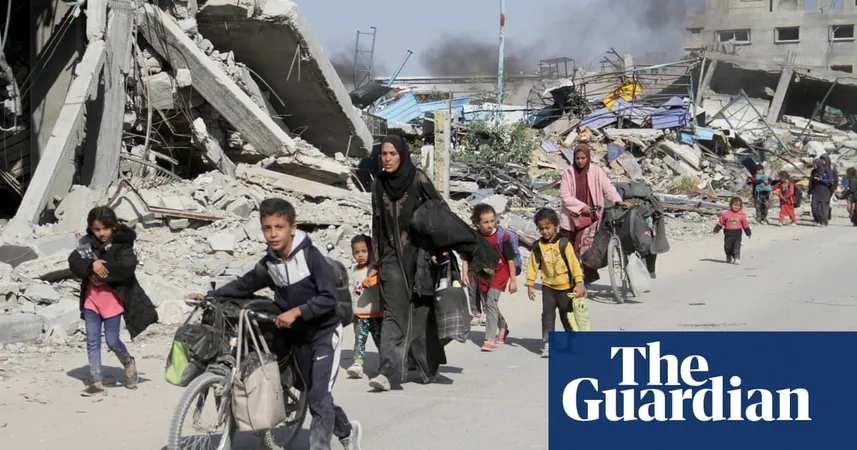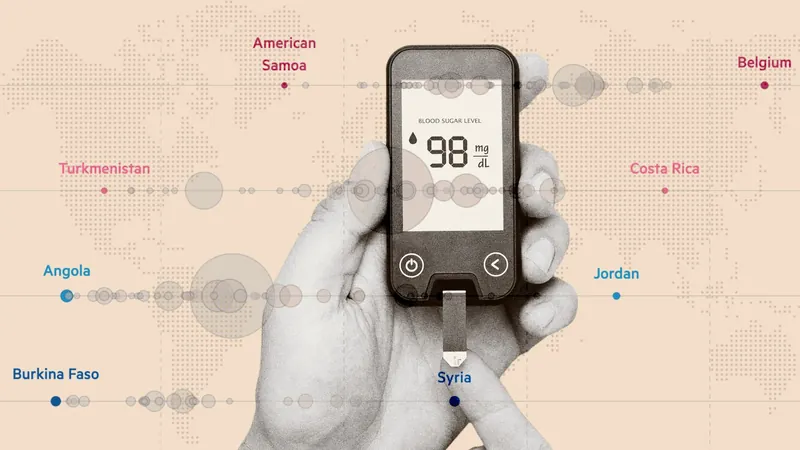
IDF Clarifies Controversial 'No Return' Comments Amid Gaza Crisis
2024-11-07
Author: Yan
Background on the Situation in Gaza
In a significant development amidst ongoing tensions in the Gaza Strip, the Israeli Defense Forces (IDF) has sought to clarify remarks made by Brigadier General Itzik Cohen regarding the evacuation status of northern Gaza residents. Cohen’s comments suggested that ground forces were nearing a “complete evacuation” of the area and that residents would not be permitted to return home.
The situation has escalated since the offensive began on October 5, leading to widespread confusion and concern over the fate of civilians. During a media briefing, Cohen stated, “There is no intention of allowing the residents of the northern Gaza Strip to return.” He claimed that only humanitarian assistance would be allowed to “regularly” enter southern territories, asserting that “there are no more civilians left” in northern Gaza.
Reactions to the IDF's Comments
However, human rights experts have condemned such statements as potentially constituting war crimes, specifically forcible transfer and the use of humanitarian aid as a weapon. This has raised alarms over Israel's broader strategy in the region.
The IDF initially did not comment on Cohen’s remarks but later released a statement clarifying that his comments were taken out of context and do not mirror the IDF’s broader goals or values. They emphasized that aid is being granted access to northern Gaza, specifically to areas like Jabaliya. Yet, residents refute this, claiming that no assistance has reached Jabaliya, Beit Lahiya, or Beit Hanoun since the onset of renewed hostilities.
Israel's Justifications and Rights Organizations' Concerns
Amidst these developments, Israel has repeatedly insisted that it is not forcing civilians from northern Gaza to retreat southward but is instead acting to counteract the regrouping of Hamas militants. Nonetheless, rights organizations suggest that Israel appears to be following a tactical plan that essentially gives civilians an ultimatum: evacuate or be treated as combatants, echoing past military strategies.
Civilians in Northern Gaza
The demography of northern Gaza remains uncertain; previous United Nations estimates suggested around 400,000 civilians could not or would not comply with evacuation orders. Recent social media footage has depicted the harrowing journeys of displaced families, highlighting the desperation as they navigate through the devastated regions of Gaza City.
Casualty Reports and Military Operations
Tragically, in just the last 24 hours, reports from Palestinian medics have confirmed the deaths of 10 individuals in northern Gaza and seven near Rafah, close to the Egyptian border, as Israeli military operations continue. The IDF, however, claims to have targeted approximately 50 militants during the same timeframe.
The Netzarim Corridor and Long-term Strategies
Further complicating the landscape is Israel’s recent establishment of the Netzarim corridor, which effectively splits the Gaza territory and separates Gaza City from other regions, intensifying the humanitarian crisis.
Although the long-term Israeli strategy concerning Gaza isn't officially a return to permanent occupation, senior officials have hinted at intentions to annex significant portions of the strip, which would have profound implications for regional stability and the Palestinian population.
Conclusion and Ongoing Monitoring
As the situation evolves, both humanitarian organizations and global observers continue to monitor the escalating conflict and its impact on civilian lives. The world watches closely as the socio-political dynamics in this volatile region unfold, raising urgent questions about accountability and international law.



 Brasil (PT)
Brasil (PT)
 Canada (EN)
Canada (EN)
 Chile (ES)
Chile (ES)
 España (ES)
España (ES)
 France (FR)
France (FR)
 Hong Kong (EN)
Hong Kong (EN)
 Italia (IT)
Italia (IT)
 日本 (JA)
日本 (JA)
 Magyarország (HU)
Magyarország (HU)
 Norge (NO)
Norge (NO)
 Polska (PL)
Polska (PL)
 Schweiz (DE)
Schweiz (DE)
 Singapore (EN)
Singapore (EN)
 Sverige (SV)
Sverige (SV)
 Suomi (FI)
Suomi (FI)
 Türkiye (TR)
Türkiye (TR)